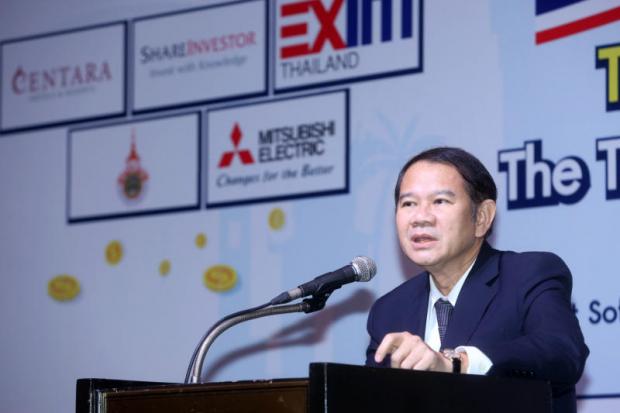
The government has set aside 861 million baht in the fiscal 2018 budget to finance human resource development in the Eastern Economic Corridor (EEC).
The development aims to supply 40,000 vocational students in five years to 10 targeted industries the government has been promoting to drive the country's economic growth.
The 10 targeted industries are: next-generation cars; smart electronics; affluent medical and wellness tourism; agriculture and biotechnology; food; robotics for industry; logistics and aviation; biofuels and biochemicals; digital; and medical services.
According to EEC Office secretary-general Kanit Sangsubhan, later this year the government is scheduled to introduce the Sattahip model, based on the success of Sattahip Vocational College, whereby the school cooperates with the government and private firms to implement work-integrated learning.
The scheme is aimed at students with a GPA of 2.5 or higher from low-income families who want to study at vocational and high vocational colleges.
Companies will offer the students a per diem stipend, tuition and welfare.
Ten companies have participated in such initiatives, including Siam Cement Group, Michelin, Thai Oil and the Metropolitan Electricity Authority of Thailand.
"The Sattahip model will first be introduced at vocational colleges in select areas and later at vocational colleges nationwide," Mr Kanit said.
As part of the development plan, the government also aims to train at least 150 teachers for the 10 targeted industries at the vocational institutes.
A recent meeting of the EEC committee chaired by Prime Minister Prayut Chan-o-cha assigned the EEC Office with organising a public hearing with related parties on education development, later conducting a human resource development plan both for the medium and long term (2019-21).
Mr Kanit quoted Prime Minister Prayut Chan-o-cha as saying that human resource development is crucial for the EEC and the first stage of cooperation with foreign universities may be instrumental in easing the shortage of human resources in the short term.
In the longer term, Gen Prayut said Thailand should have its own capability to develop human resources to meet the demand for science and technology development and innovation.
"I am quite happy that many private companies are willing to support vocational students, with some providing equipment for training and offering daily allowances for students who attend training at their factories," he said. "I've also asked the Education Ministry to help reconsider whether existing courses conform to demand from the industries."
According to a survey conducted by the Federation of Thai Industries, industries in eastern Thailand annually face a shortage of as many as 50,000 qualified technical and vocational workers.